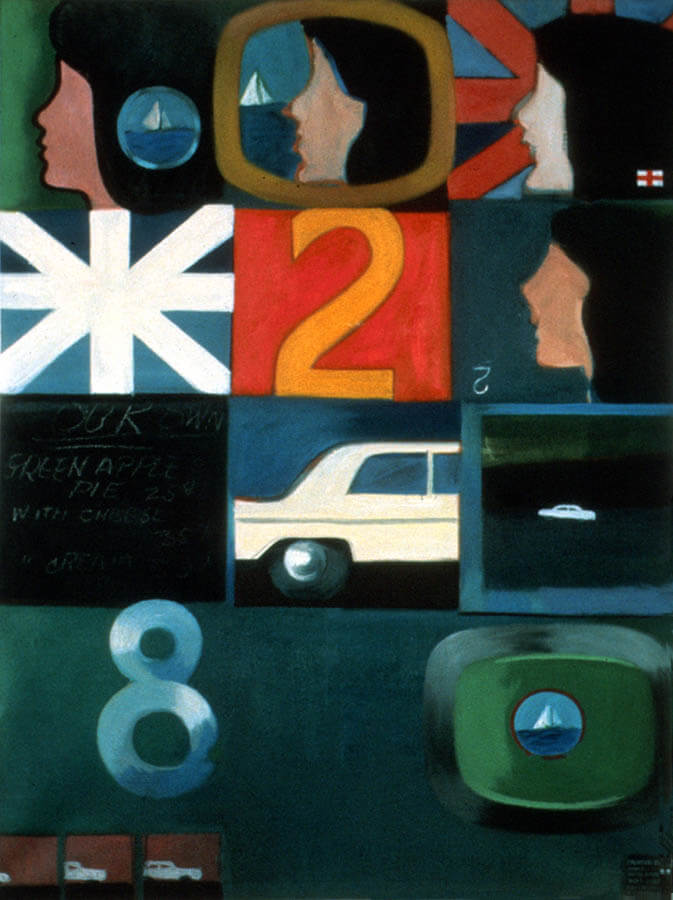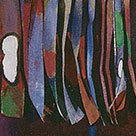The Battery 1963

Joyce Wieland, The Battery, 1963
Oil on canvas, dimensions unknown
Private collection

The Battery is the neighbourhood at the southernmost tip of Manhattan, and though this artwork provides neither a conventional nor a realistic picture of the city, it is an unabashedly figurative painting. Wieland had painted people and objects during the 1950s, but those works tend to be expressionistic and painterly. Notable here in stylistic terms are flatness, graphic outlines, and comic-book features that Wieland uses to depict a woman’s profile, a white car, a sailboat, a chalkboard, some large numbers, and what might be a flag.
This work points to an important development in Wieland’s art: the division of the painted surface into a series of boxed forms or panels, providing a grid-like structure. In a sense the grid is a typical modernist device, one that allows objects to be neatly organized and categorized, as in Notice Board, 1961, and Brad’s Bridge, 1963. Here Wieland’s use of the grid functions differently, however, and raises the possibility that a narrative is unfolding. The meaning of the painting emerges as the viewer “reads” the sequence of images beginning in the top left corner, continuing across and downward toward the bottom right. There is no obvious storyline here, but the montage of close-up and distanced views creates an impression of events occurring across time and place. The woman’s head in profile is repeated, and the surrounding imagery veers between an immediate urban environment and the dream of an ocean voyage.
Once again, as with Stranger in Town, 1963, Wieland is willing to borrow the appearance and logic of pop-culture forms—as found in comic books, animation, and cinematic storyboards—to create a new kind of narrative painting.

 About the Author
About the Author
 More Online Art Books
More Online Art Books
 Acknowledgements
Acknowledgements